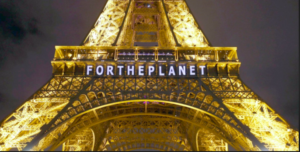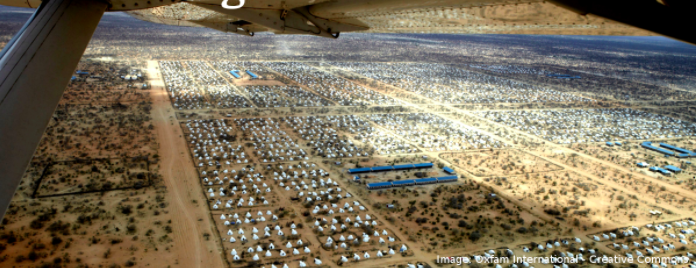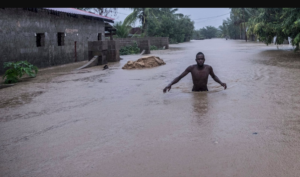The Emperor of the Paris Climate Accord Has No Clothes On
Now what do we do
There is increasing concern (realistic recognition?) that the Paris climate agreement (2015-16) to limit global warming was a fantasy. The great hope at Paris was that we could limit global warming to 1.5 degrees C (2.7F) over pre-industrial levels, but that hope seems dashed against the rocks of continued reliance on fossil fuels. Indeed we have already allowed a 1.0 to 1.3C rise in temperature. And only three signatories to the Paris Accord, out of 197 countries, have submitted by February 9th the required plans to strengthen their climate actions.
The question is now whether the fallback target of a 2 degrees C (3.6F) rise is foregone. It probably is. Just look at the doomsday analysis in most recent assessments. David Roberts’ article in Vox is a well-reasoned, thoughtful example. See, Sources.
While it seems theoretically, technically possible to meet the 2 degrees rise target, there seems no political willpower to stave off our failure. Perhaps the only question is when the failure will be undisputed.
So what then, or now.

First, meeting the Paris target was largely dependent on mitigation alone.
We certainly cannot rely on the fossil fuel interests that are largely intent on continuing to explore and drill for more fossil fuels until stopped by someone. Nor can we count on these companies to remove from the atmosphere the the bulk of the GHGs still in our atmosphere that they produced.
And who can we rely on to stop the fossil fuel interests? It is critical that each of us still does everything possible to ward off the climate breakdown, no matter how small the gestures. But global large-scale action is clearly required. And we are not getting and will not get such action with the current crop of autocratic, dictatorial leaders, led by the unholy marriage of Donald Trump and Vladimir Putin.
If mitigation is not going to do the job, and many political leaders are feckless, at best, what’s left beyond prayer or despair. Technology? Many are turning to negative emissions, where we remove carbon from the atmosphere to keep the temperature manageable. The most talked about option is carbon capture and storage, but that technology is more talked about than developed. It also seems unlikely that it will be available on a large scale before we pass the 2 degrees rise in temperature.
The rapid advances, and economies of scale, in solar and wind energy are impressive and will do much to save us from even worse impacts from climate breakdown, but they likely will not prevent the 2 degrees rise.
While all this negative talk brushes against deep despair, it also should give rise to anger.
For those who are least responsible for all the GHGs in the atmosphere are the one most likely to be subjected to the impacts from the resulting climate breakdown.
Those with secure financial resources are more likely to survive the serious, immediate impacts of climate change breakdown, such as extreme weather events (e.g., fires, flooding, intense heat waves). Rich people living in at-risk coastal, wooded or other areas of developed countries may lose their real estate, whether of houses or businesses, but most of them likely can and will move to safer ground. See “Climate Gentrification” in the iePEDIA section of irish environment (below). They will also buy more and larger air conditioning systems.
But the most vulnerable to climate breakdown are often the poorest and they will be out of luck and resources. Those who live on coastal or wooded areas of developing economies will lose their homes and they will have to evacuate, as environmental refugees, with no ability to replace their lost homes or even much of a chance of returning to their home area. Perhaps only refugee mega tent cities will be available for them, for a long period. Or forever.

Who is going to allow the millions and millions of environmental refugees into their country? Who is going to pay for the food and care for those living in these tent cities? How many potential hosts will have the resources, including armed forces, to resist the migrations while their own lands and resources and populations are under severe stress from climate breakdown.
The rich should not feel too secure in such scenarios. First there are millions and millions more of the poor and disadvantaged than them. And while the poor may simply accept their fate, we know that such distress can generate profound unrest, and violent uprising.
For as the rich have provoked and prosecuted wars over oil, to feed their enterprises, the poor are equally capable of going to armed conflict to fight for their very existence. Increasingly, armed conflict around the world is fueled in part by the effects of climate breakdown.
And as climate breakdown spreads, it will not be just intermittent extreme weather events that have to be dealt with. Food supplies will become unpredictable or permanently interrupted. The basics of many economies will be at risk, and damaged.

Even the rich cannot always escape such wide-spread consequences. For example, the coronavirus does not respect country boundaries, it is not impressed or intimidated by wealth, and it can disrupt supply and demand markets, and stock markets.
Likewise, climate breakdown will not be deterred by border walls or sandbags or armed forces or wealth or prayer.
But enough with the dire dark thoughts. Even if we pass the 2 degrees C mark, we will still have to fight to remain below 2.5, or 3.0, or 4.0, or more degrees.
So let’s pretend for the moment there is some hope. The 2021 New Year may see at least Trump, if not Putin, gone and a new energy in America for proactive climate action. The youth movement may continue to pressure the fossil fuel interests and force them to curtail their exploration and drilling. The global community may control coronavirus, and businesses and governments can get back to controlling their carbon rather than any viruses.
Finally, we can end with a concrete note of optimism. We recently got a commitment from Microsoft to make the company carbon negative by 2030, and by 2050 to have removed all the carbon dioxide that the company has released since its founding in 1975.
Well, it is something. And perhaps it would be a useful legal requirement to impose on the fossil fuel companies. After all, the polluter must pay.
Sources
David Roberts, “The sad truth about our boldest climate target: Limiting global warming to 1.5˚C is almost certainly not going to happen. Admitting that need not end hope,” Vox (3 Jan 2020). bit.ly/3a9Vzek
John Benson, “Climate Change – When Time Runs Out,” energy central ( 21 May 2019). bit.ly/3c7Bebs
Kevin O’Sullivan, “Is 2020 the world’s last chance to tackle climate change,” The Irish Times (22 Feb 2020). bit.ly/2PxEEKS
Shannon Osaka, “The Paris Agreement set an unrealistic target for global warming. Now what?” Grist (12 Feb 2020). bit.ly/2T4zR5M
“Climate Gentrification” in the iePEDIA section of irish environment (1 March 2019) at www.irishenvironment.com/iepedia/climate-gentrification/
Conor Cawley, “Microsoft Vows to Eliminate Carbon Emissions,” tech.com (16 Jan 2020). bit.ly/2T887NR
“Negative Emissions” in iePEDIA section of current issue of irish environment magazine (1 March 2002).


No comments yet, add your own below